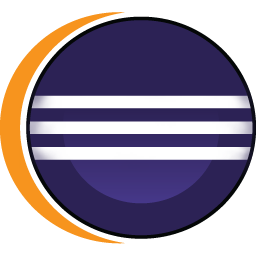Trying to type with one hand is much harder and slower than typing with two. Currently, the US workforce is comprised of 92.9 million women - forty-seven percent (US Department of Labor). At maximum, only one in four employees at a large tech company is a woman, rendering their corporate personnel totals hollow. Why is the female component of the workforce minimally included in the fastest-growing industry in the world? Women are an imperative part of the technological movement, and are key to filling the large influx of jobs in computer science and its related fields.
Interaction with technology begins at a very young age, both for boys and for girls. Most of the time it’s through video games, especially as kids games on mobile platforms continue to increase in number. “I have always played video games with my brother,” says Romy Bolton, Director at the University of Iowa SiteNow program (a paid website development program) and creator of the eBongo bus tracking system. She credits part of her initial interest in tech to video games; this goes for the majority of kids today as well. Ninety-seven percent of all teens, regardless of gender, play video games. And while ninety-nine percent of boys play games, this is followed closely by girls’ ninety-four (Pew). As the global market for all video games grows, interest in playing them grows as well: “There are more games that girls are interested in,” says Bolton. At the teenage level, girls are only one percent behind boys in desktop gaming at seventy-three percent and out-game boys on mobile platforms by ten percent, indicating potential interest in desktop and mobile computing. Also, girls significantly outplay boys in the puzzle game category eighty-seven to fifty-eight percent, showing a clear interest in problem solving (Pew). Girls are clearly interested in technology, yet comprise only thirteen and ten percent of computer science and engineering degrees respectively (US Department of Education). A large, looming problem exists with women’s presence in the technological field, and it has to be solved.
The gender gap in computer science and its related fields has actually widened since the advent of the personal computer despite relatively stable gender disparities in other STEM (Science, Technology, Engineering and Mathematics) fields (Sax). The intentions of many women entering college has markedly changed: in 1983, approximately four percent of women intended to major in computer science, compared to men’s five-point-eight; this was followed by a significant drop in intention for both men and women in 1985. In 1996, the rise of the Internet revitalized computer science interest, and men’s intention numbers shot up to six and a half percent; women’s peaked at just above one-point-four. Since then, women’s numbers have continued to decline and now rest at a miniscule zero-point-three percent compared to men’s two (Sax). The gap in degrees given to women is also quite significant: in 1985-86, fourteen percent of all Bachelor’s degrees were given to computer science majors, and women represented thirty-seven percent of those awarded. In 2011, seven percent of all degrees went to CS (computer science) graduates, and women comprised seventeen percent; in 2012, eight percent of degrees were in CS, and women represented thirteen percent (US Department of Education). Although these statistics indicate loss of interest in computer science for both genders, the amount of women intending to major or graduating in the field of computer science has declined alarmingly.
Under most circumstances, the factors that play into women shying away from careers in CS likely begin as early as kids are able to play with toys. “I think in general many parents still create gender biases within their kids that often preclude girls from expressing interest in things like [...] LEGOs that could lead them to a career in STEM,” Bolton says. And as these problems continue through primary and secondary education, self-rated confidence in mathematical ability among young women (compared to male counterparts) drops significantly. Another contributor is the ideology behind choosing a career: statistically, women tend to favor jobs where they can help those around them. For example, women are now nearly equally represented in the medical and bioscience fields (Sax, US Department of Labor). However, the idea of sitting behind a desk and programming all day oftentimes doesn’t appeal to the ‘helping-others’ ideal. These factors have played into a drastic lowering of women’s interest in the field, dealing a blow to the tech industry of the future.
The tech industry grows larger every day, and with this growth comes the need for human capital. With effectively half of the potential workforce declining work in this field, the country may face a problem filling these new positions (US Department of Labor). Currently, seventy-seven percent of all companies in Silicon Valley intend to hire more people in 2015, and of that seventy-seven percent, sixty-two percent plan to increase their staff by more than a fifth (Silicon Valley Bank). By 2022, there will be more than one-point-two million computer science jobs in the United States. Unless more women enter the field, only sixty-one percent of those positions can be filled (US Department of Labor). On top of low graduation numbers for women in CS, an analysis of 10 large Silicon Valley and Seattle companies show that they underemploy women, especially in the technology sector:
Alongside the gender gap, a gender-pay gap exists as well. Women with a Bachelor’s or higher are paid forty to seventy-three percent less than men with the same educational experience, and the percentage only grows as educational level increases (Silicon Valley Index). If the negative trends in graduation rates, employment, and pay equity are perpetuated, the tech industry will not have enough employees to fill its necessary jobs. These companies must employ women if they wish to remain relevant and, in turn, alive.
Bolton says that there is hope on the horizon resulting from increased mobile phone and computer use with girls. “So many, if not all, girls have smartphones now and recognize the way they integrate with their daily lives” she says. It’s much more than Bolton had as a kid, and now she gets “girls and women telling me all the time that something should be made into an app for phones. Just that level of interest, knowledge and integration with technology will steer some girls in this direction”. In this vein, Harvey Mudd College and the Anita Borg Institute began a project called Building Recruiting and Inclusion for Diversity, or BRAID. Its aim is to restructure the recruiting process for computer science departments in 15 major universities across the US. BRAID reaches out to high school instructors and students to make CS courses less intimidating, to generate interest in underrepresented groups, and to create joint majors like biology and CS (Sax, Harvey Mudd). Another possibility, says Bolton, is that technology is shifting away from “hardcore techies” and towards “communication, customer service and empathy, consensus building, understanding how technology systems can integrate to solve problems, documenting requirements, training end users, better ways to lead and deliver technology projects - all things that are more in line with the way many women think and not so much solely manipulating bytes”.
It is absolutely necessary to get more women into the tech field. Three of the top ten highest-rated careers are in the computer science fields, all with average base salaries starting at or above $97,800 (Forbes). Through powerful initiatives such as BRAID and the support of role models like Bolton and Sax, the gender gap, while large, can be worn away. With concentrated effort to instill and retain an interest in technology from women and relaying to high school students the large potential in the technology field to build communities and better society, there is hope. “You see the impact every single day, on real people. Your friends and your family. That’s just… magical” (Fitzpatrick).
Citations and Bibliography
Pew Research Centers. Pew Internet & American Life Project: Teen & Parents Gaming and Civics Survey. Pew Research Centers, November 2007 - February 2008. Web. http://www.pewinternet.org/2008/09/16/part-1-1-who-is-playing-games/
United States Department of Labor and Statistics. Labor Force Statistics. May 8, 2015. Web. http://www.bls.gov/data/
United States Department of Education, National Center for Education Statistics. Table 318.20. Bachelor’s, master’s, and doctors degrees conferred by postsecondary institutions, by field of study: Selected years, 1970-71 through 2011-2012. Digest of Education Statistics, 2013. Web. https://nces.ed.gov/programs/digest/d13/tables/dt13_318.20.asp
Linda Sax. Examining the Underrepresentation of Women in STEM Fields: Early Findings from the Field of Computer Science. University of California, Los Angeles, 2011-2012. Web. http://new.csw.ucla.edu/publications/newsletters/2011-2012/article-pdfs/Apr122.pdf
Silicon Valley Bank. Innovation Economy Outlook 2015. Silicon Valley Bank, 2015. Web. https://www.svb.com/innovation-economy-outlook/
Rachel Massaro, Alesandra Najera, Silicon Valley Institute for Regional Studies Advisory Board, Joint Venture Silicon Valley Board of Directors, Silicon Valley Community Foundation Board of Directors, Index Advisors. Silicon Valley Index 2014. Silicon Valley Institute for Regional Studies, 2014. Web. http://www.siliconvalleycf.org/sites/default/files/publications/2014-silicon-valley-index.pdf
Harvey Mudd College. Harvey Mudd Launches BRAID Initiative to Increase Diversity in Computer Science. Harvey Mudd College, 2014. Web. https://www.hmc.edu/about-hmc/2014/09/24/harvey-mudd-launches-initiative-increase-diversity-computer-science/
Susan Adams. The 10 Most Promising Jobs of 2015. Forbes, January 2015. Web.
http://www.forbes.com/sites/susanadams/2015/01/27/the-ten-most-promising-jobs-of-2015/
Jen Fitzpatrick. MAKERS at Google: Women in Technology. Google, 2013. Web. https://www.youtube.com/watch?v=tjFeLln_tfg
Bolton, Romy. Personal Interview. May 13, 2015.








